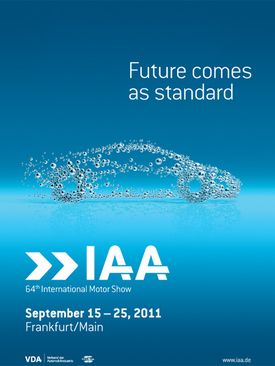Asia
EMEA

LANXESS Canada Contacts
Contact our Sites in Canada
Media Inquiries
General Inquiries
Please click here to e-mail LANXESS Canada with product inquiries and general requests.
Global Press Releases
2011-09-13
Chemical materials from LANXESS for the car of the future
Sustainable mobility begins in the test tube
Fewer CO2 emissions through “green” tires and lightweight plastics
When it comes to the future of the car, chemist Dr. Werner Breuers is certain about one thing: “Intelligent chemical materials are a must if we are to achieve sustainable mobility and maybe even the zero-emissions car.” Heading up research and development on the Board of Management of the specialty chemicals group LANXESS, Dr. Breuers is confident that his company is in an excellent position: “In a few years' time, we will be sitting in vehicles whose environmental credentials, efficiency and performance are shaped to a large extent by innovative materials from LANXESS. This is true, for instance, of our rubbers, which can be used to produce fuel-saving, low rolling resistance tires, and our high-tech plastics, which can be processed into lightweight components with a high load-bearing capacity for car bodies, for example.”
“Green” tires with far lower rolling resistance
Road traffic accounts for 18 percent of global CO2 emissions. And tires are responsible for between 20 and 30 percent of a passenger car's fuel consumption and around 24 percent of its CO2 emissions. It therefore comes as no surprise that legal regulations for cutting the CO2 emissions of vehicles – such as the forthcoming EU tire labeling regulation – start with tires. “We have developed special-purpose rubbers and rubber additives that help cut the rolling resistance of tires by up to 30 percent without having a negative impact on their wet grip and service life,” said Breuers. Reducing rolling resistance to this extent cuts the fuel consumption of a passenger car – with a gasoline engine and average fuel consumption of 10 l/100 km – by half a liter per 100 km and its CO2 emissions by 1.2 kg per 100 km. “This way, tires made of our special-purpose rubbers are already making an important contribution to climate protection,” added Breuers.
This contribution will rise significantly in the future, because global growth in mobility is forcing national legislators to push the use of “green” low rolling resistance tires to protect the environment and our climate. “We expect that the share of these high-performance tires compared to normal tires will rise by 77 percent by 2015. They will soon be standard in Europe,” said Breuers.
Number of plastic automotive parts rising strongly
In addition to “green” tires, systematic lightweight construction also helps cut vehicle fuel consumption and CO2 emissions. Intelligent material concepts based on lightweight plastic are especially popular. In Europe, for instance, around 15 percent of a vehicle's weight is currently made up of plastic parts. “Given the trend towards electric cars, we expect this figure to increase to 25 percent in the near future, because the heavy weight of the batteries has to be compensated elsewhere to ensure that electric vehicles have an acceptable range,” stated Breuers.
Lighter still with nylon composite sheet hybrid technology
Breuers expects that the plastic/metal composite technology based on metal and Durethan polyamides, also known as hybrid technology, will prove invaluable. This is because hybrid components are usually 20 to 30 percent lighter than pure steel components delivering the same performance. “It will be possible in the future to use this lightweight design to manufacture not only front ends and brake pedals but also such items as sills, doors and battery trays for electric motors,” said Breuers. Recently, LANXESS succeeded with its partners in significantly enhancing the performance potential of hybrid technology even further by using nylon composite sheet instead of metal. “This cuts component weight by around another 10 percent over aluminum hybrid designs. The savings over hybrid components with sheet steel are even greater,” continued Breuers.
Rubber raw material made of biomass
LANXESS focuses on renewable resources in its sustainable mobility concepts. For example, the company has worked with its partners to develop a synthesis process to produce isobutene – a key raw material for butyl rubber – from sustainable raw materials. The process is based on fermentable sugar derived from corn. Tests have shown that biomass-based isobutene can be used to produce butyl rubber that meets even the strict quality standards of the tire industry. “This process could open up a renewable and therefore resource-friendly raw material source for this crucial tire rubber and thus reduce our dependency on fossil fuels,” said Breuers.
The latest news from LANXESS direct to your mobile phone: mobile.lanxess.com
LANXESS is a leading specialty chemicals company with sales of EUR 7.1 billion in 2010 and currently around 15,800 employees in 30 countries. The company is at present represented at 46 production sites worldwide. The core business of LANXESS is the development, manufacturing and marketing of plastics, rubber, intermediates and specialty chemicals.
- Gallery






